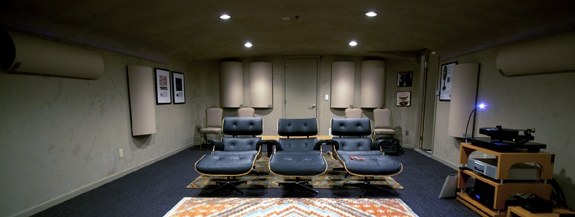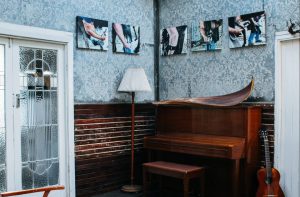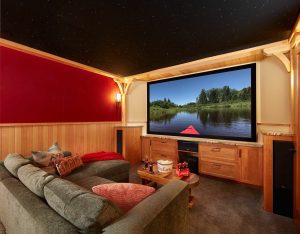Music Listening Room
Like all audiophiles, I have fought with room acoustics since I purchased my first stereo. With the recent introduction of the Acoustic Curve panels, I can honestly say that for the first time I am in love with the sound in my music room. Thanks Acoustic Geometry, you have saved me my sanity!
-Paul Blizel

Front of Music Room

Back of Music Room















